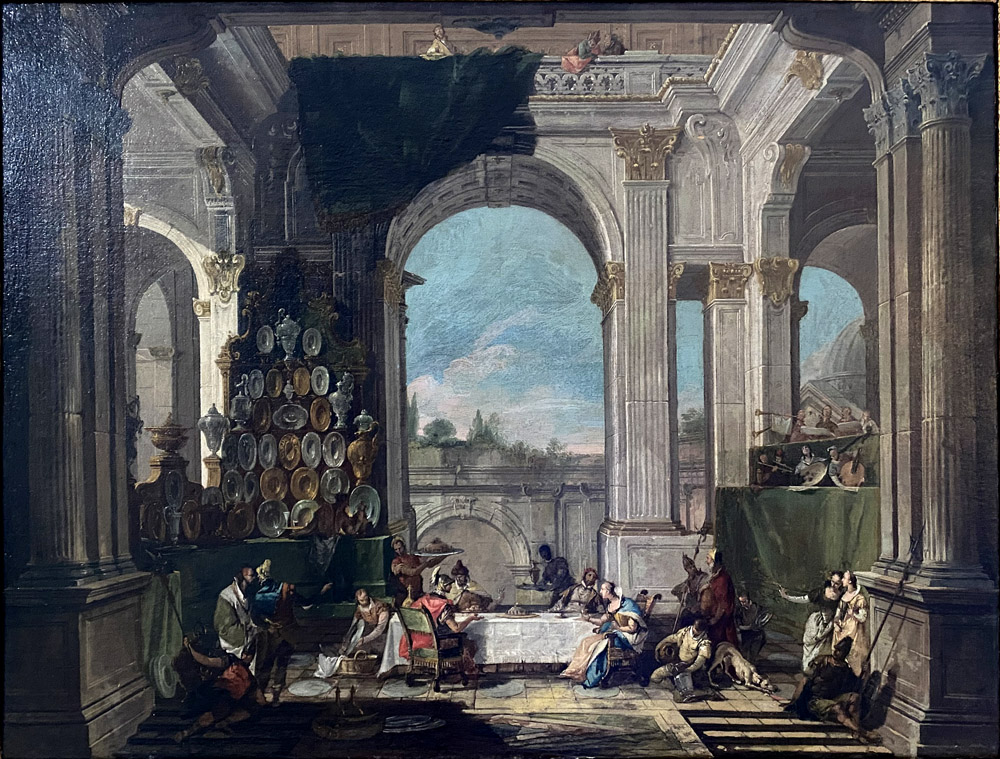Francesco Battaglioli and Francesco Zugno, The Banquet of Abigail and Nabal

18th century
Ca' Rezzonico Museum, Venice, Italy
The story of Nabal and Abigail is told in I Samuel 25. The museum's title notwithstanding, the subject of the painting is not Nabal's banquet but the meeting between his wife Abigail and David. David had sent some of his men to ask hospitality of Nabal. Because Nabal refused with insults, David resolved to kill him and all his men. But now Nabal's wife Abigail comes to David and gains his forgiveness by offering ass-loads of foodstuffs and reminding him that "Nabal," after all, means "fool." In the painting David is the young warrior in the helmet and red cape. On the right, Abigail leans forward to implore his mercy.
While all this is happening Nabal is at a different banquet, drinking himself into a stupor. When he awakens the next morning, Abigail tells him about his close call "and his heart died within him, and he became as a stone."
It is tempting to take the blue cape as suggesting that Abigail is a type of the Virgin Mary, although no such relationship is suggested in the writers quoted in the Glossa Ordinaria. There Abigail signifies "the people who have turned to God." Her name means "the exultation of my father" – a reference, Rabanus Maurus says, to Jesus' words in Luke, "There shall be joy in Heaven over one sinner who repents." Nabal on the other hand represents the Jews. The wine that has impaired his senses is the "carnal" interpretation of the Law that leads them to reject Christ, his Apostles, and "the refreshing nourishment (refectionem) of faith and good works."1
View this image in full resolution.
Read more about images of King David.
Photographed at the museum by Richard Stracke, shared under Attribution-NonCommercial-ShareAlike license.